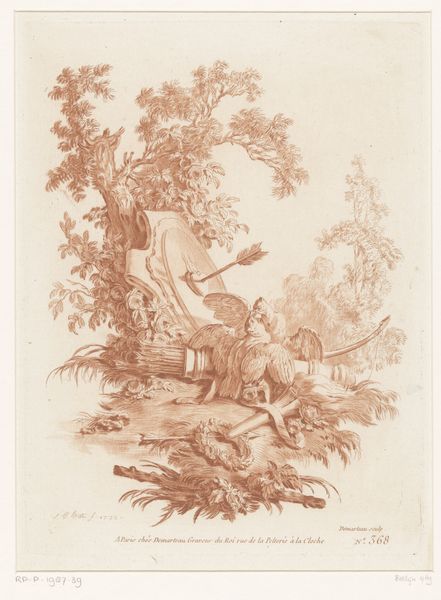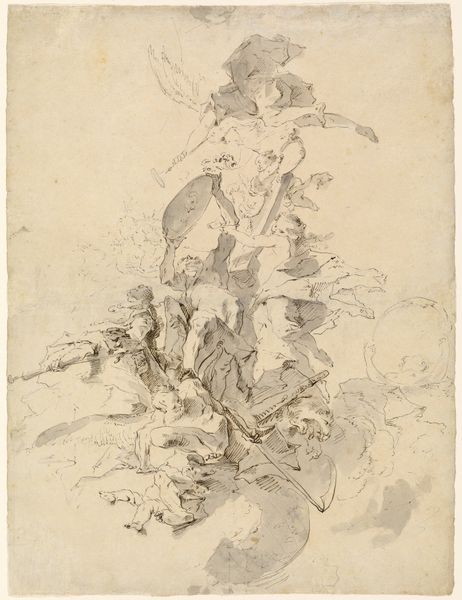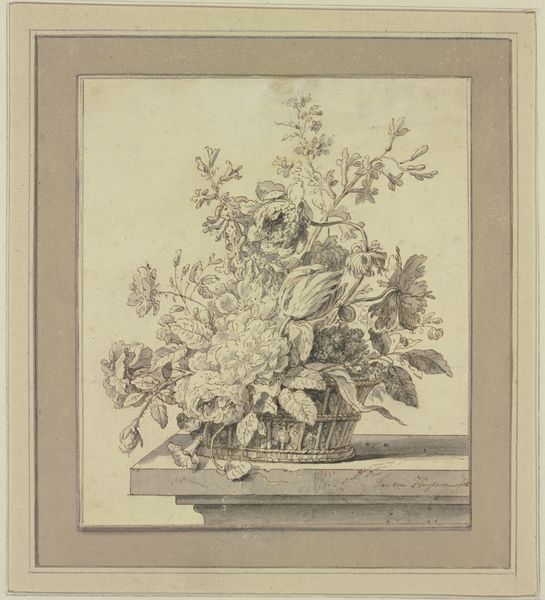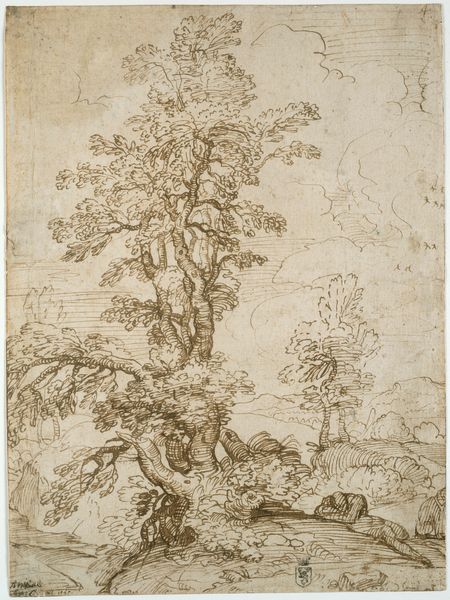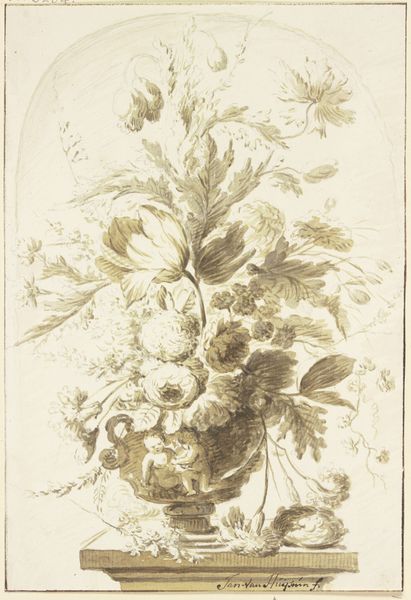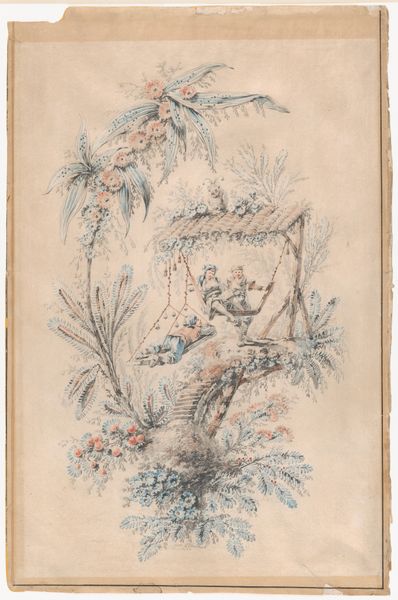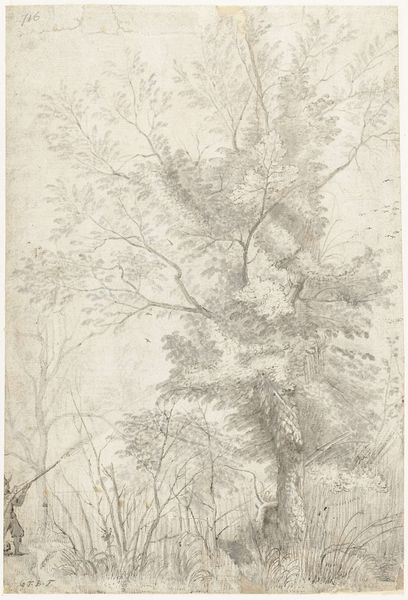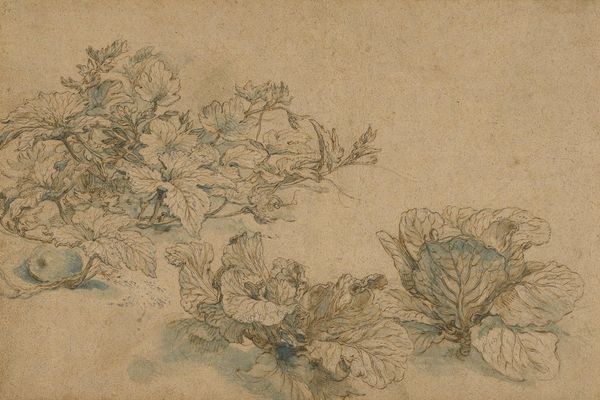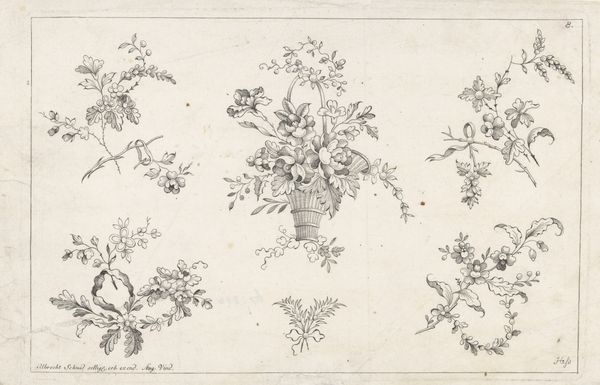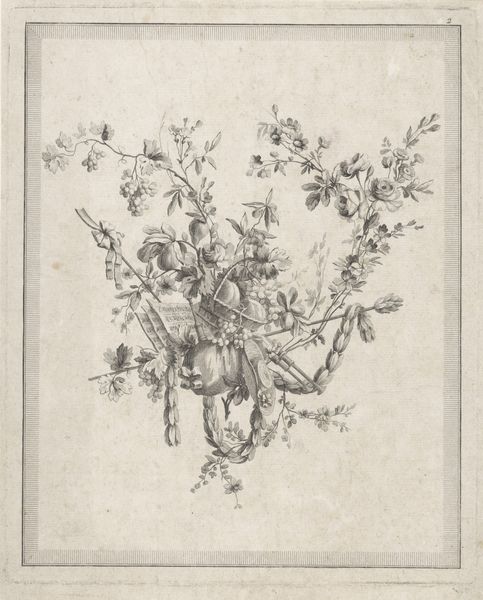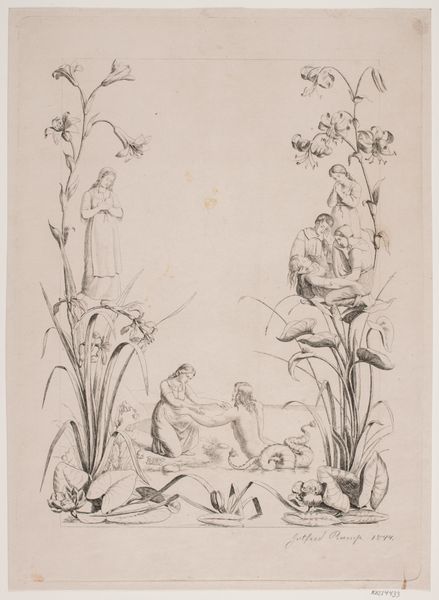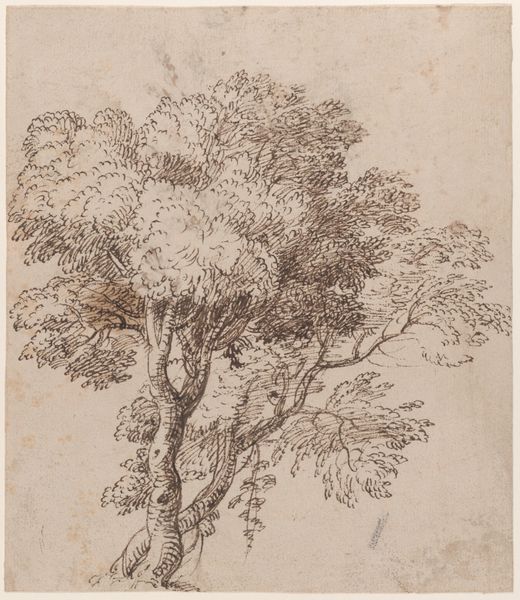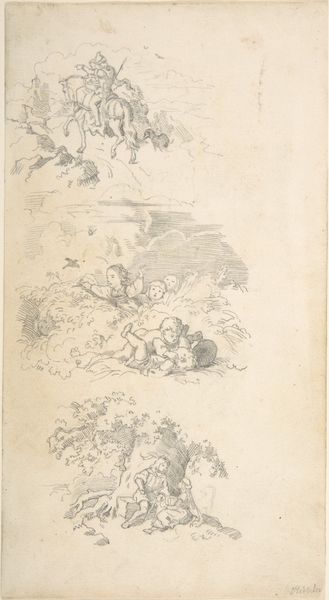
Dimensions: 8 3/8 x 6 7/16 in. (21.3 x 16.4 cm.)
Copyright: Public Domain
Curator: I'm immediately drawn to the delicate, almost ethereal quality of this print. It has a very gentle and intimate atmosphere. Editor: This is a drawing called "Study for a Pastoral Scene," created by Jean-Baptiste Huet I, sometime between 1760 and 1811. The artwork, held at the Metropolitan Museum of Art, employs etching and coloured pencil in a rather unusual fashion. Curator: Yes, you can really see Huet experimenting with technique. Notice how the coloured pencil hasn't fully adhered in places. There is something immediate about seeing the materials. Editor: Absolutely. Consider the period—late 18th century, the rise of Romanticism. How does the composition, with its motifs of birds, flowers, and musical instruments, function within a context of aristocracy on the verge of revolution? It hints at a yearning for a simpler, idealized past. Curator: But what interests me is Huet's deliberate display of craft. He's using inexpensive materials, like etching and colored pencil to render this image. It's neither painting nor sculpture, not a high art form per se, yet meant for display, which is thought-provoking. Editor: Certainly, Huet produced many works that were explicitly decorative. We must recognize the economic forces at play: images for domestic consumption, part of a booming print market feeding a newly literate populace. This drawing speaks to the commodification of idyllic imagery. Curator: That brings up something else. See the paper? The shape isn’t rectangular but an octagon. The material is meant to be consciously noted; part of its allure resides in that subtle shape. Editor: You make a strong point. The choice of form and media highlights the artist's skill and plays into a larger narrative. This piece reminds us that seemingly simple images can offer complex reflections of the period in which they were produced and consumed. Curator: It makes me think about the accessibility of art-making during that time, too. Perhaps this print wasn't only meant for a noble family; it also demonstrates Huet's methods to other aspiring artists. Editor: Ultimately, this image serves as a rich visual document reflecting art's role in shaping cultural desires and narratives during a transformative historical moment.
Comments
No comments
Be the first to comment and join the conversation on the ultimate creative platform.
